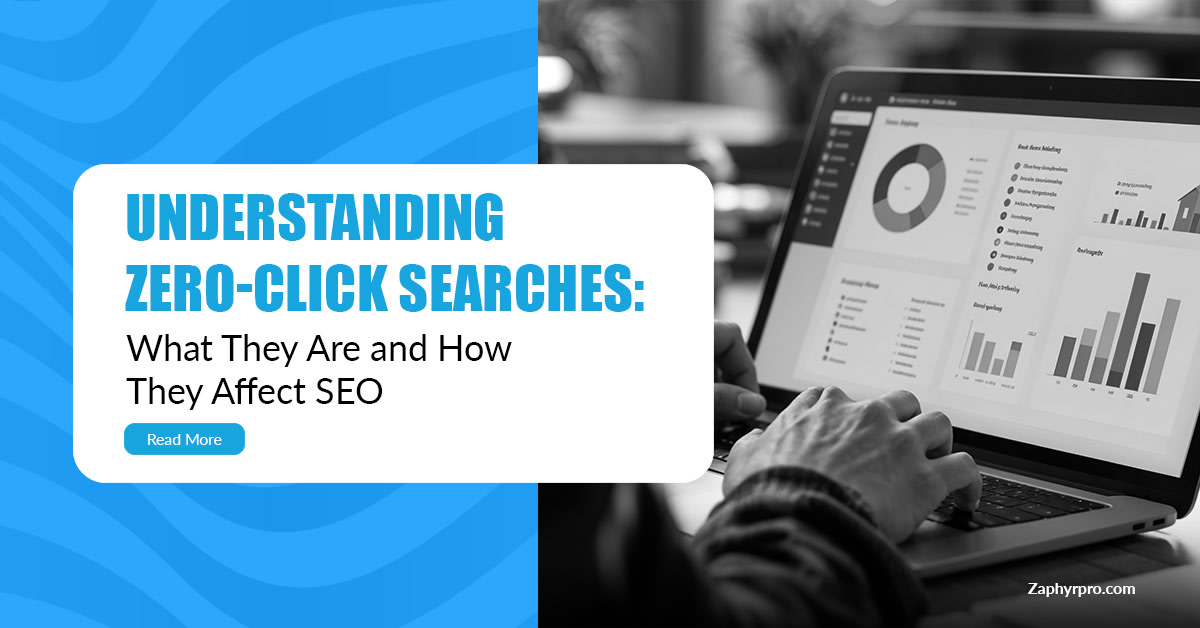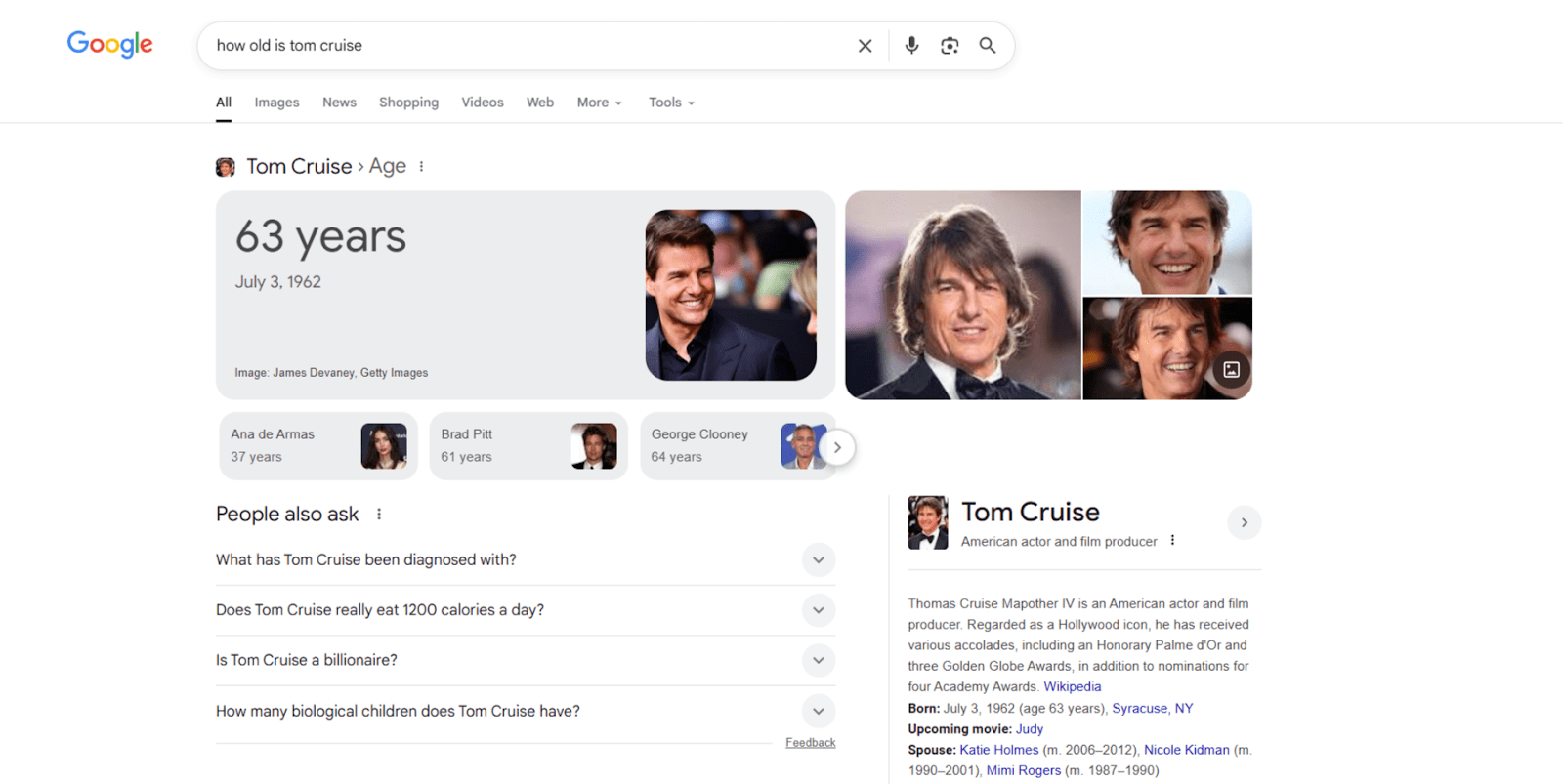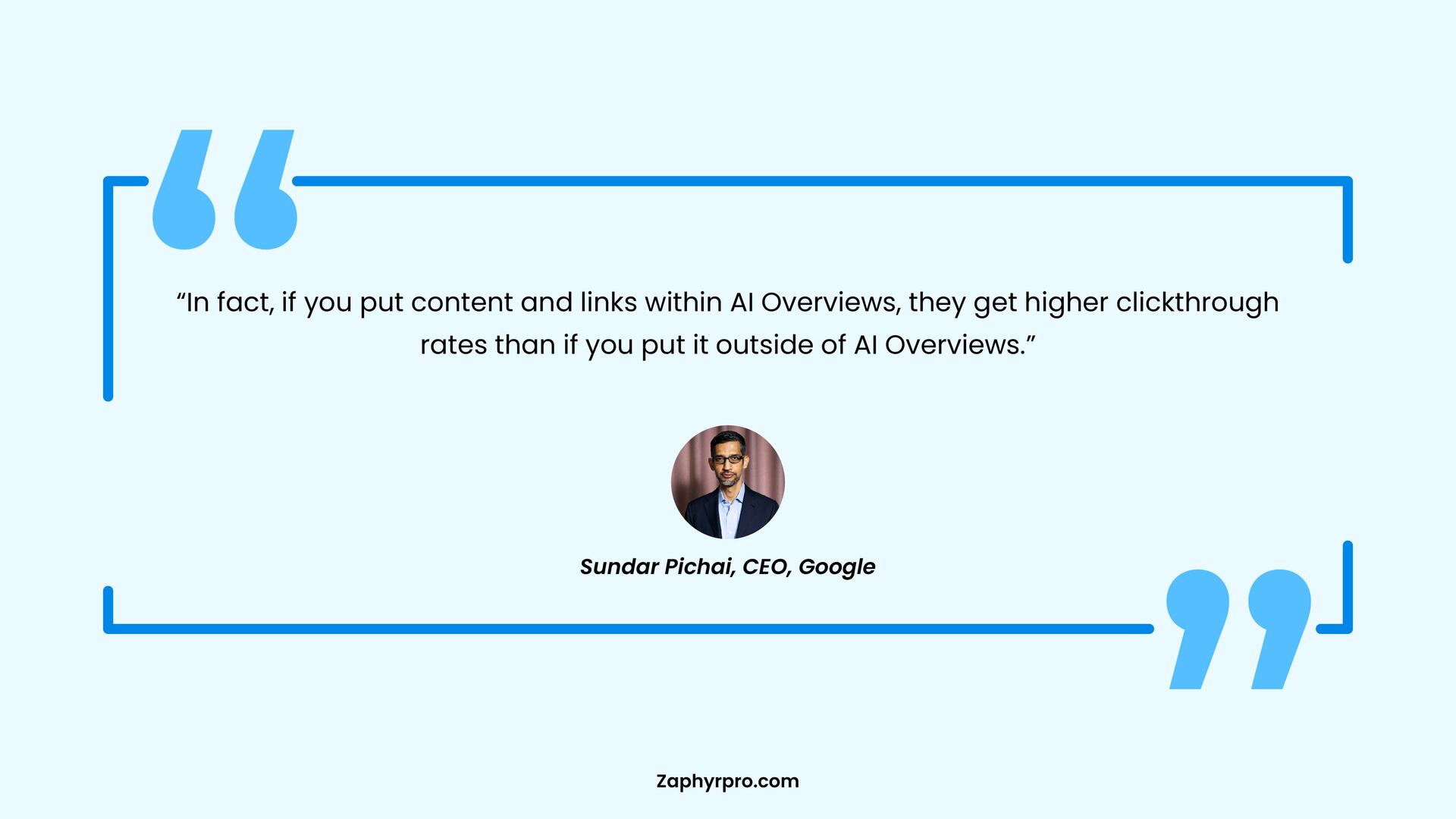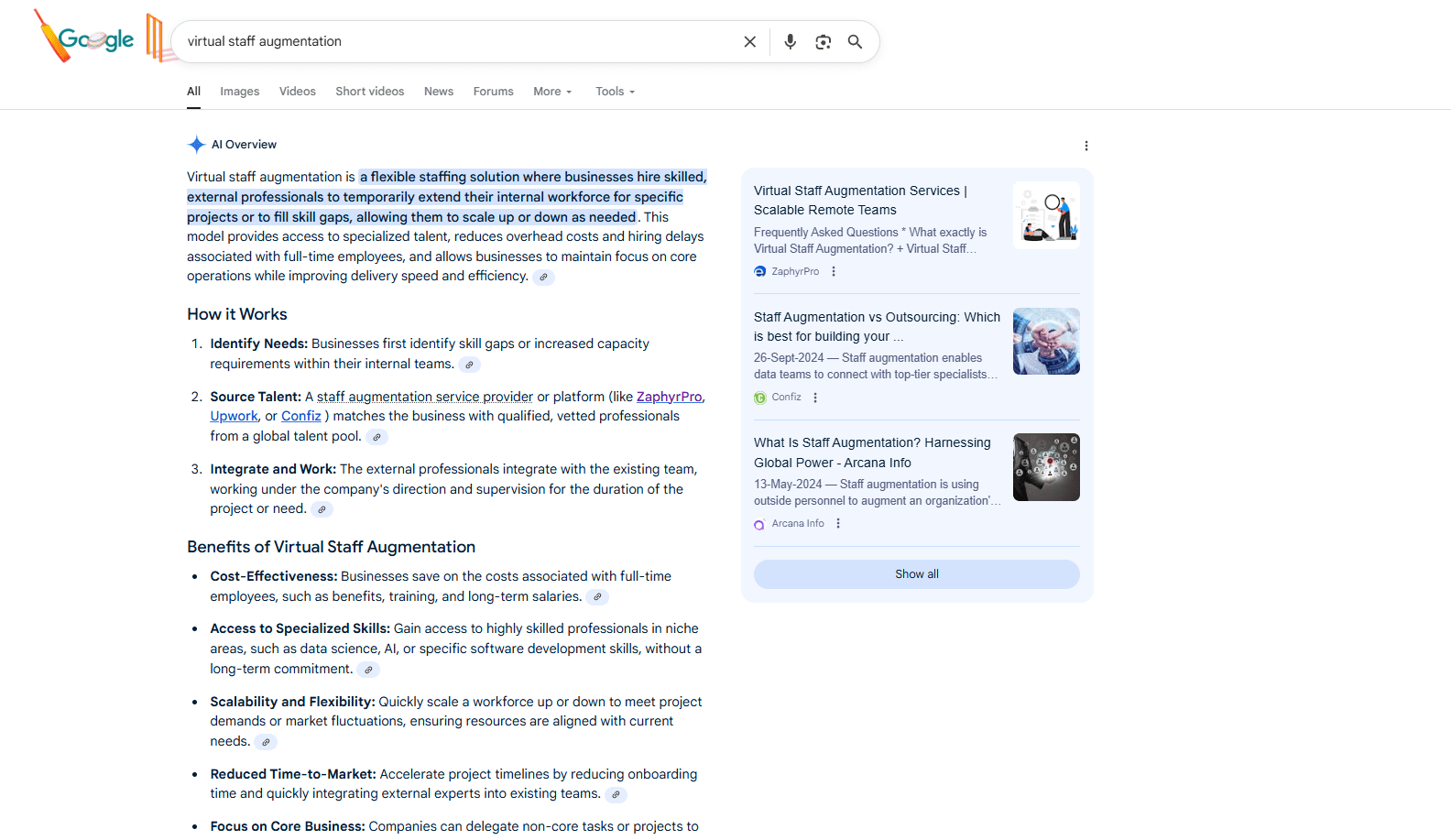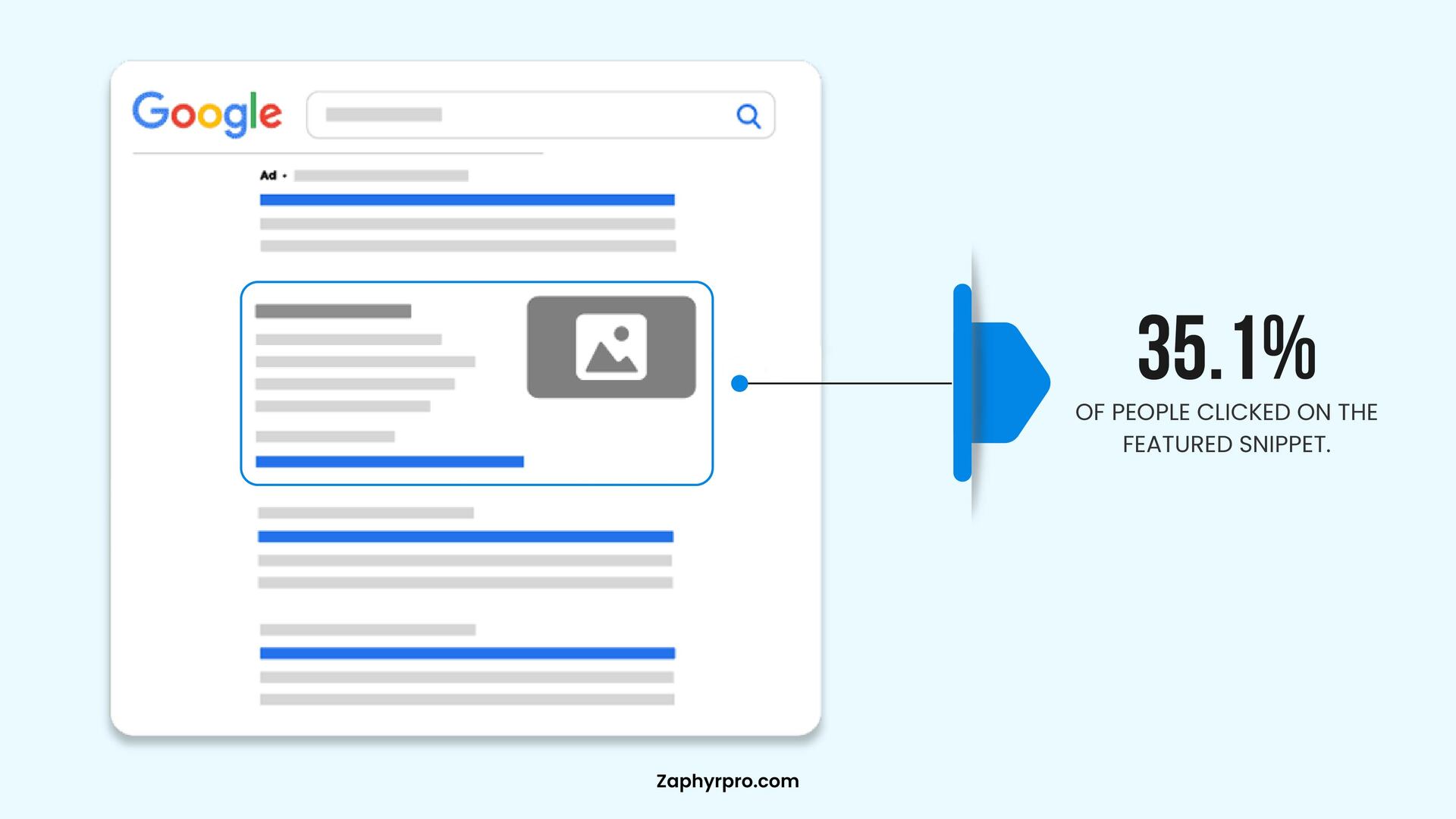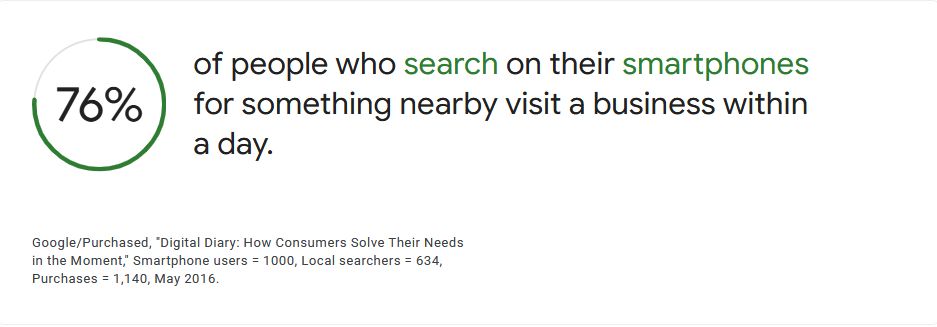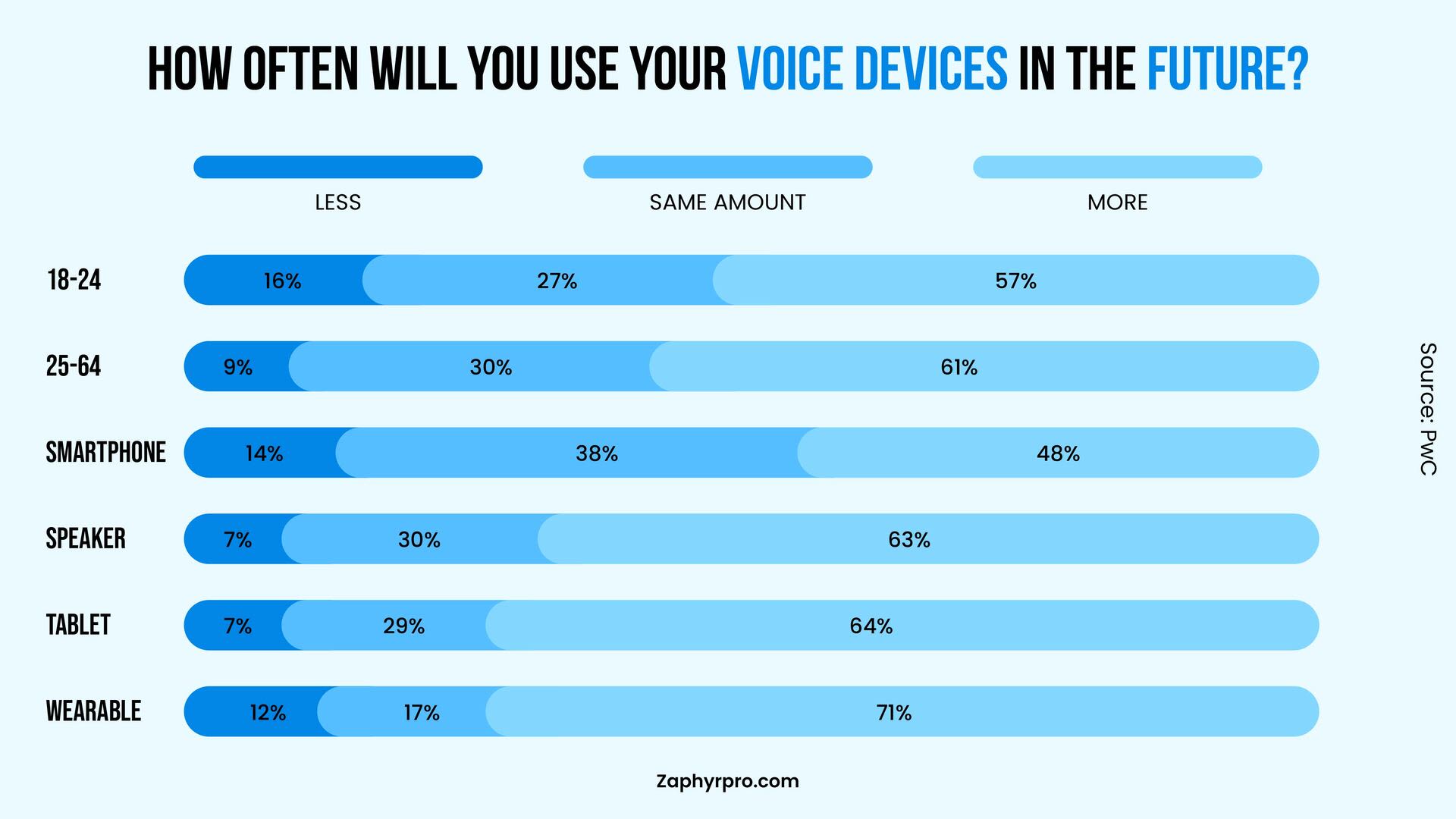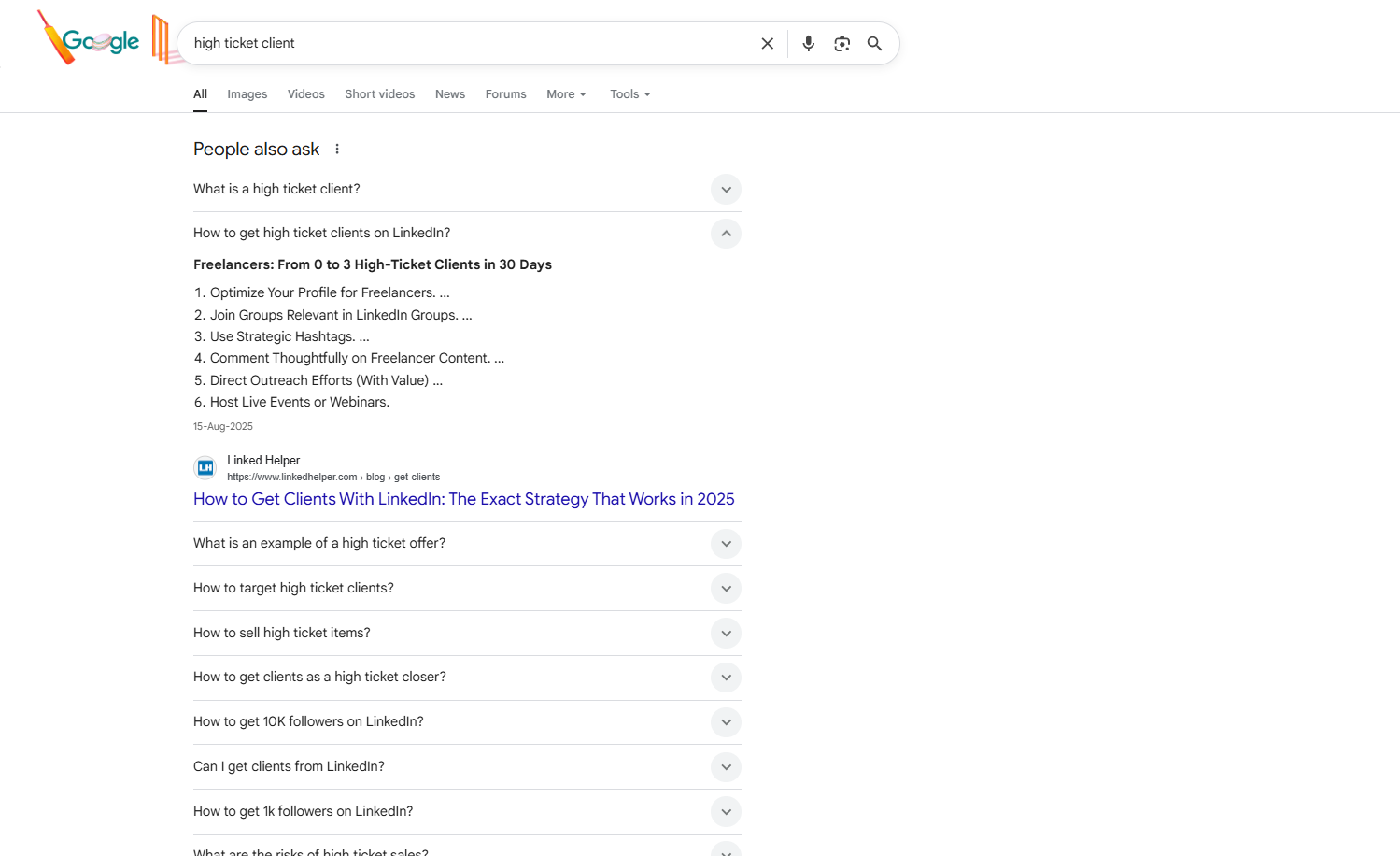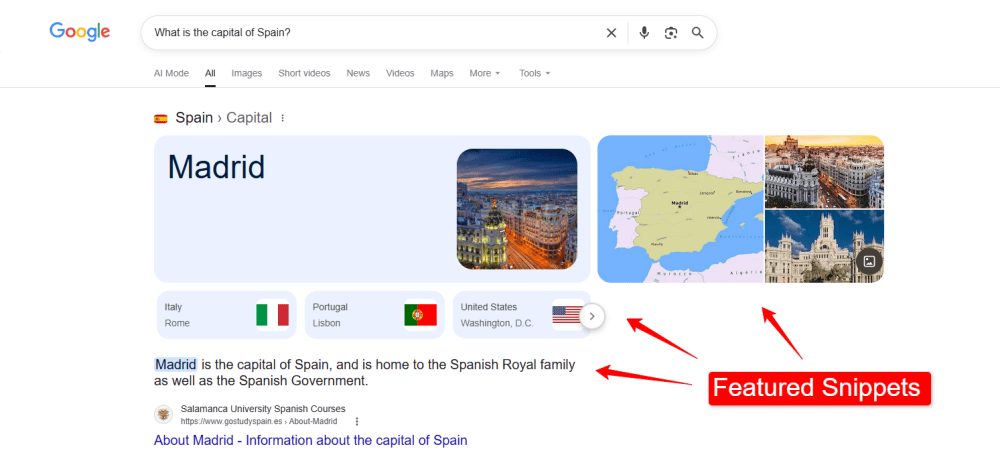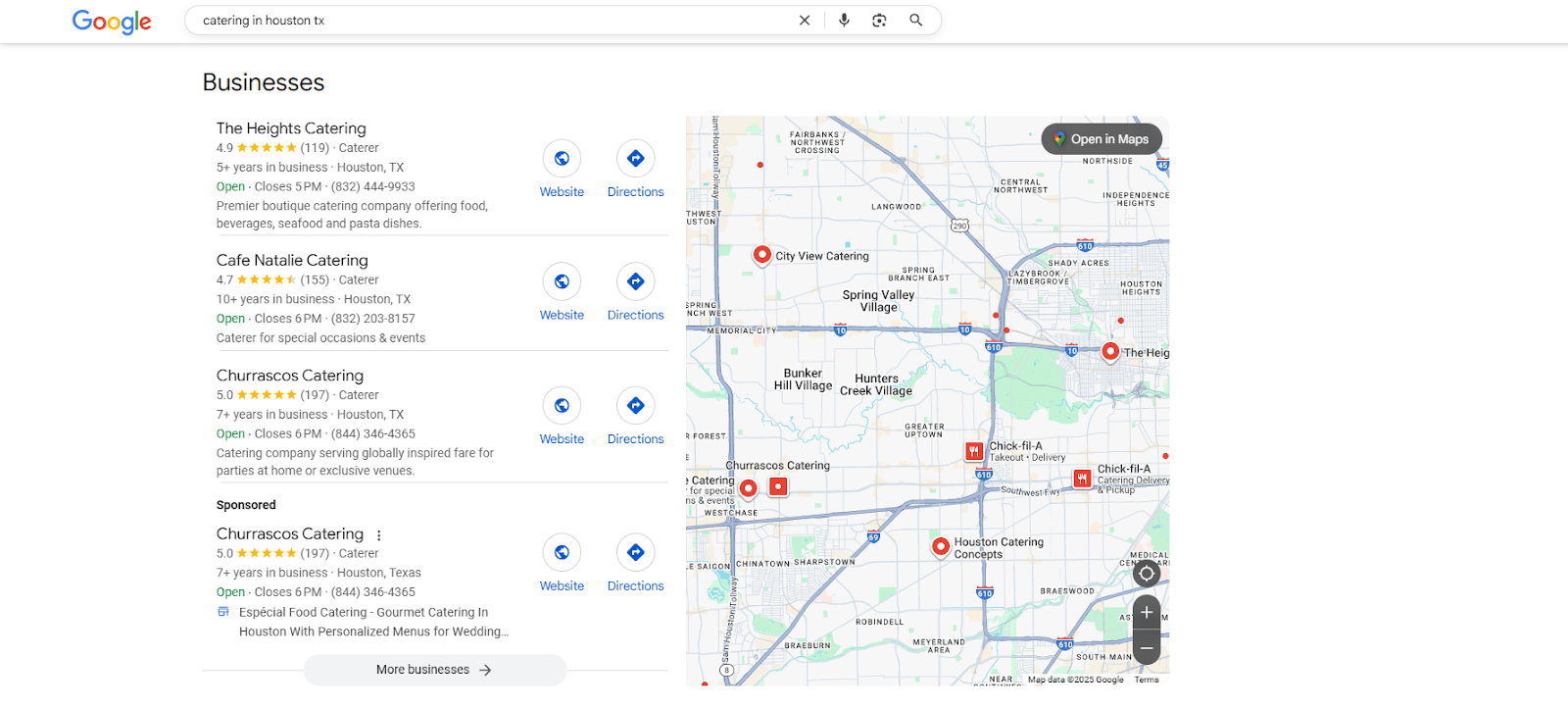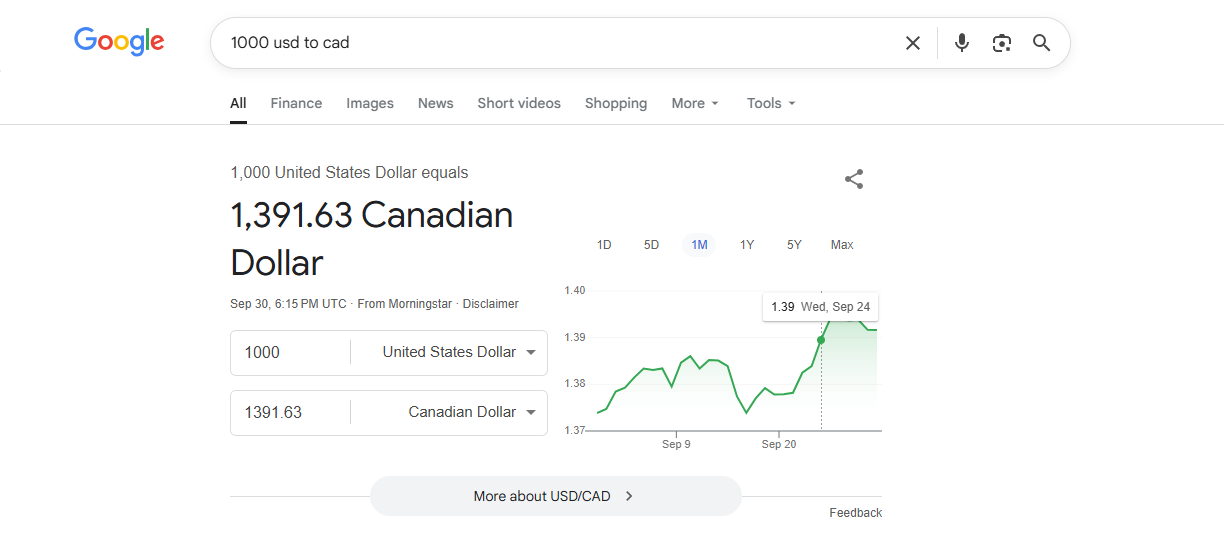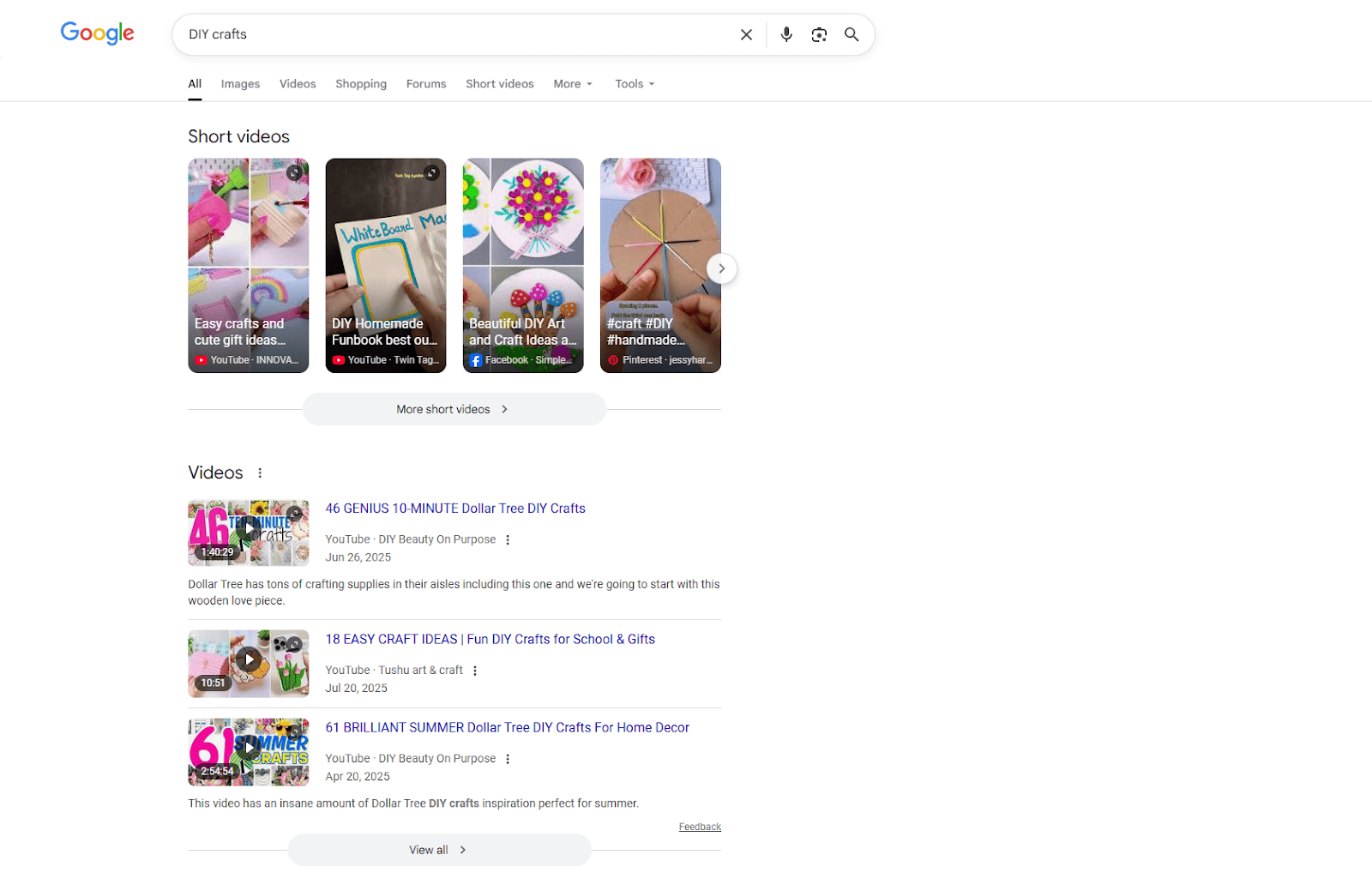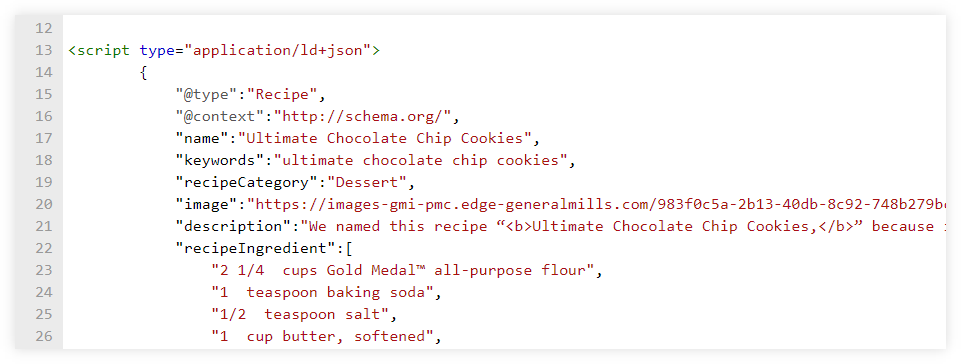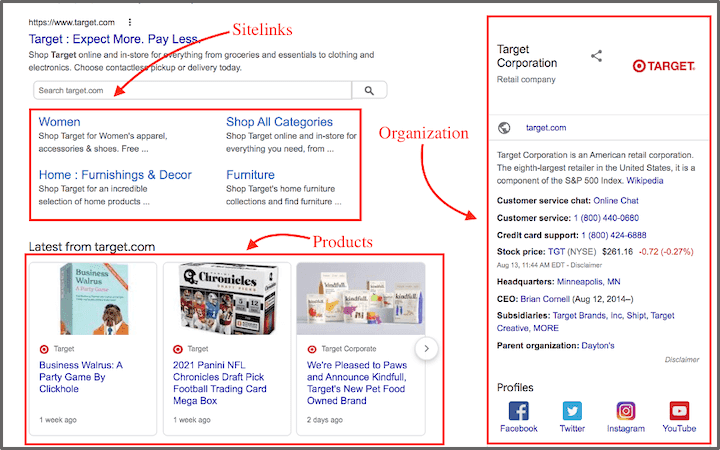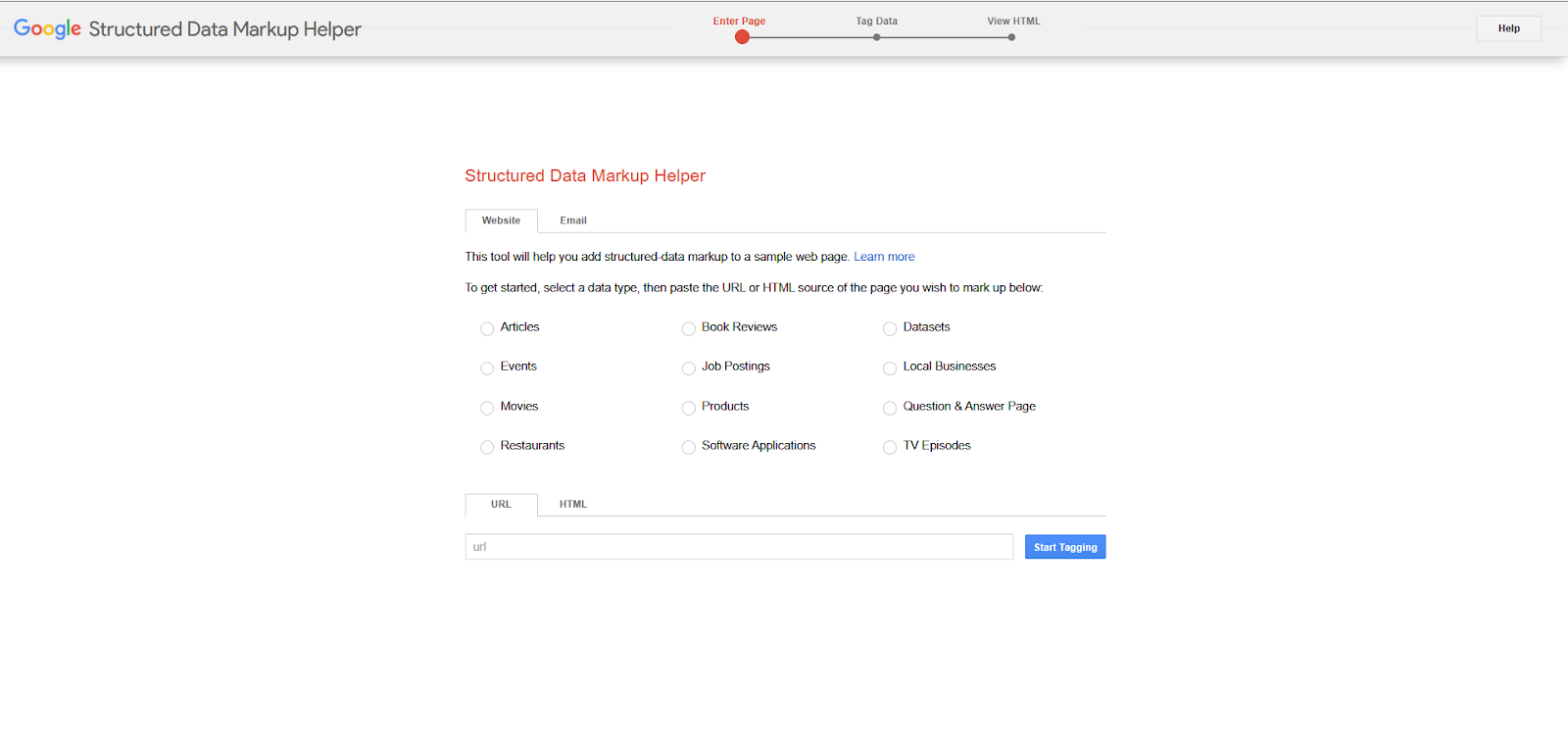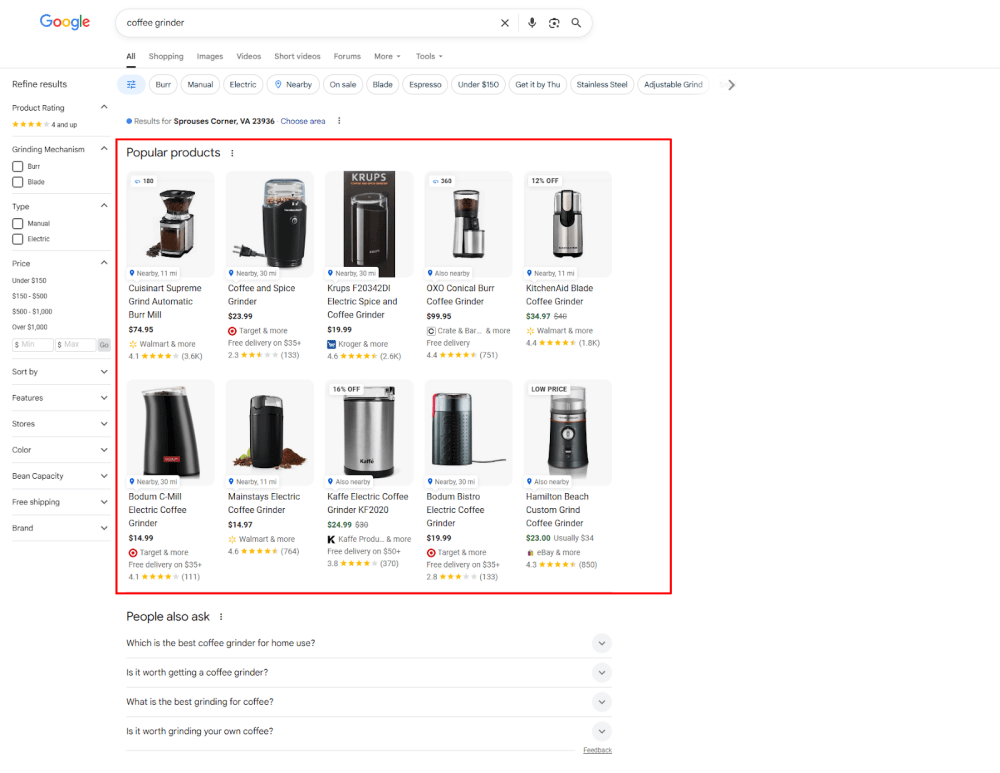Have you ever Googled something like, “best virtual staff augmentation services” and instantly seen a list of agencies with ratings right at the top of the page?
Or maybe you typed in, “How old is Tom Cruise,” and Google gave you the answer immediately:
That’s a zero-click search. It’s when Google gives you the answer directly on the search results page, so you don’t even need to visit a website. For users, it’s quick and convenient. But for businesses, it changes how you need to think about SEO.
In this post, you’ll learn:
- What zero-click searches are and why they matter
- The most common zero-click SERP features (with examples)
- How to optimize your content to take advantage of this trend
What Exactly Are Zero Click Searches?
Zero click searches are search engine results that provide the information users are looking for directly on the search page, accordingly to the search intent, without the need to click any further. Essentially, they give quick answers, saving time for users and preventing them from having to visit multiple websites.
Some frequent examples are:
- Local Business Listings: When you search for a business or restaurant name, Google might show its address, hours, and phone number right on the search page.
- Quick Facts (e.g., Weather, Sports Scores): Searching “weather today” or “current stock price” gives you instant results without needing to visit a site.
- How-To Information: Search results for “how to tie a tie” can show step-by-step instructions right on the page.
Want to future-proof your SEO?
With the right content strategy, it’s an opportunity. ZaphyrPro can help you make the most of it.
Book A ConsultationWhy Do Zero Click Searches Matter for SEO?
If nobody clicks on your result, does ranking still matter?
Short answer: Yes.
Zero-click searches are changing how users interact with Google. Instead of clicking through to read an article, they often get their answers directly from the search results. That means less traffic hitting your site.
How much less? Pretty significant.
Ahrefs looked at 300,000 keywords and found that when AI Overviews showed up, the #1 result lost 34.5% of its clicks.
In other words, even the top spot isn’t safe anymore.
But, Google doesn’t see AI Overviews as a threat. They see it as an upgrade.
Sundar Pichai, Google’s CEO, even said:
So yes, clicks are down. But that doesn’t mean zero-click searches are worthless. In fact, they might be one of the best ways to keep your brand visible where users are paying the most attention to the SERP itself.
Take the keyword “virtual staff augmentation” as an example:
- Traditional search: A user types in “virtual staff augmentation,” scans the blue links, and clicks on a blog post. From there, they read the article, maybe click around your site, and you’ve got a chance to turn that visit into a lead.
- Zero click search: Now, things look different. Instead of clicking, the user sees Google’s AI Overview serving up a bulleted explanation such as what staff augmentation means, why businesses use it, and even the steps to get started. All of that right there in the SERP.
No click required.
If Google pulled your content to generate that summary, your brand name and link show up inside the AI Overview box. It’s like being featured in the “prime real estate” of search.
And that matters because users notice the sources Google cites. Even if they don’t click immediately, they associate your brand with authority on the topic. That recognition builds mental trust.
Then, when they are ready to dive deeper—like comparing vendors or booking a consultation—your brand is the one they remember and choose to click.
Why Are Zero Click Searches Increasing?
Zero click searches are becoming more common, and there are a few important reasons why. Let’s break down the key factors that are making zero-click searches more prevalent, with some significant stats and insights to back it up.
Smarter Search Engines
Search engines like Google are getting smarter every day, thanks to artificial intelligence (AI) and natural language processing (NLP). These technologies allow search engines to understand queries in a much more nuanced way.
For example, Google’s RankBrain and BERT algorithms can interpret language better, providing users with more contextually relevant answers right in the search results without needing to click through to a website.
Google has revealed that over 15% of searches each day are completely new, meaning they’ve never been seen before by the search algorithm. This has led to an increase in featured snippets (also known as position zero) and other types of zero-click formats.
Engine Scout found that 35% of all clicks go to featured snippets. This shows how much Google search ranking factors are focusing on providing answers directly, instead of just linking to websites.
Consumers Want Instant Answers
People’s expectations are changing fast. With the rise of mobile SEO optimization and voice search, users no longer want to waste time clicking through several websites to find a simple answer. They want information now.
A Google report found that more than 70% of mobile users visit a store within one day of searching locally. As improving website page speed and convenience become more important, zero-click searches are becoming essential for businesses that want to stay visible.
The Rise of Voice Search and Virtual Assistants
Virtual assistants like Siri, Google Assistant, and Amazon Alexa are making voice search more popular than ever. In fact, by the end of 2025, emarketer predicts that half of all searches will be voice-based. Since voice search optimization tends to be conversational, it’s a natural fit for zero-click searches, which provide short and direct answers.
A PwC survey found that 65% of 25–49-year-olds use voice search at least once a day. This is rapidly changing the way people search for information, with voice assistants offering answers directly.
AI-Powered Search Engines
Thanks to AI, features like featured snippets, local packs, and knowledge panels are front and center in zero-click searches. These features give you answers right at the top of the search page.
A SEMrush study found that over 35% of all Google searches now show a featured snippet. And as AI keeps improving, even more queries are getting direct answers right in the search results. However, this doesn’t mean your website won’t benefit from zero-click searches. In fact, it’s an opportunity to enhance your content marketing strategy.
7 Most Common Types of Zero Click Searches on Google
As mentioned, zero-click searches can come in many forms, each designed to provide quick information in response to specific types of queries. Let’s take a deeper look at the main categories:
AI Overviews
AI Overviews are Google’s latest twist on zero-click searches. Instead of just pulling a snippet from a single page, Google’s AI generates a summarized answer that pulls context from multiple sources across the web. Think of it like a mini research assistant living inside the search results.
For example, if you search “What is a virtual sales assistant” Google may generate a short paragraph explaining the concept, followed by a bulleted list of benefits all stitched together by AI. At the bottom, you’ll usually see links to the sources Google used, giving your brand a chance to be featured right inside the overview.
People Also Ask (PAA)
People Also Ask boxes are one of the most common zero-click features — and one of the most overlooked. These expandable question boxes show up in the middle of the search results, covering related queries that users might have.
When you click on a question in the People Also Ask (PAA) box, a short answer expands right below it, pulled directly from a website. At the same time, Google often loads even more related questions, creating a chain of follow-up queries.
For example, if you search for “high ticket client”, the PAA box might show questions like “What is a high ticket client?”, “How to get high ticket clients on LinkedIn?”, or “What is an example of a high ticket offer?” — each with quick answers you can view without leaving the results page.
What makes PAA so powerful is that it gives websites multiple opportunities to be discovered. Even if your page doesn’t rank in the top position, you can still get visibility by being the source behind one of those expandable answers. That’s valuable exposure, especially since these users are already showing deeper interest in the topic.
Featured Snippets
Featured snippets are direct answers displayed at the top of search results. They often appear as a summary or list extracted from a relevant page. For example, searching “What is the capital of Spain?” might show “Madrid” in a highlighted box. Featured snippets can be a great way to appear at the top of the search results without a user having to click through to your website.
Knowledge Panels
Knowledge panels appear to the right of search results for entities like celebrities, places, or companies. These panels provide quick facts, typically including biographical information, key statistics, and related links. For businesses and well-known figures, appearing in a knowledge panel can mean valuable visibility, even if users don’t click through to the website.
Local Packs
Local packs are another form of zero-click search. When users search for businesses near them, such as “restaurants near me,” Google might display a map with nearby options, including the business’s name, rating, hours, and phone number. This provides users with all the details they need without having to click on a website.
Instant Answers
Instant answers in search engines provide immediate responses to specific queries. For example, asking “What’s the weather today?” or “100 USD to EUR” will return the information right in the search results, allowing users to get what they need without navigating to a website.
Image or Video Carousels
For visual searches, Google sometimes displays image or video carousels that allow users to scroll through relevant content directly in the search results. For example, searching “DIY craft ideas” might display a carousel of images or video tutorials, allowing users to preview relevant media instantly.
7 Steps to Rank for Zero Click Searches
Zero click searches happen when users get their answer directly on the search results page without clicking through to a website. Google’s AI Overviews, featured snippets, and knowledge panels are the main culprits. While this means less traffic, ranking here establishes authority and brand visibility.
1. Target Question-Based Keywords
Focus on queries that start with who, what, when, where, why, and how. These trigger AI Overviews more frequently than commercial keywords. Use tools like AnswerThePublic or Google’s “People Also Ask” section to find these questions in your niche.
Example: Instead of targeting “project management software,” target “what is the best way to manage remote teams.
2. Structure Content for Scannability
AI systems extract information from well-organized content. Use clear hierarchies with H2 and H3 tags, short paragraphs (2-3 sentences), and formatting elements like bullet points for lists and bold text for key terms.
The goal is making your content easy for both AI crawlers and humans to parse quickly. Think of your structure as a roadmap that guides extractors to the most relevant information.
3. Answer Questions in the First 100 Words
Place your direct answer immediately after the H1 or H2 heading. AI Overviews typically pull from the opening paragraphs where the core answer lives. Be concise and definitive—save the elaboration for later paragraphs.
This “inverted pyramid” style mirrors journalism: most important information first, supporting details after. If someone only reads your opening, they should get the essential answer.
4. Use Schema Markup
Implement structured data to help search engines understand your content context. FAQPage, HowTo, and Article schemas are particularly effective for zero-click optimization. This markup doesn’t guarantee selection, but it significantly improves your chances.
Schema speaks the language of search engines directly, removing ambiguity about what your content covers and how it’s organized.
5. Build Topical Authority
Create content clusters around specific topics rather than isolated articles. When you have 10-15 interconnected pieces about a subject, search engines recognize you as an authority source, making you more likely to appear in AI Overviews.
6. Optimize for Definition and Comparison Queries
Two content types dominate zero-click results: clear definitions and side-by-side comparisons. Create dedicated pages that define industry terms succinctly or compare options in table format. For definitions, aim for 40-60 words that capture the essence without jargon. For comparisons, use tables with 3-5 key differentiators that help users make quick decisions.
7. Update Content Regularly
AI systems favor fresh, current information. Set a schedule to review and update your high-performing content every 3-6 months. Add new statistics, remove outdated information, and refine your answers based on evolving user intent.
The Drawbacks of Zero Click Searches for Websites
Of course, no trend in SEO is without its downsides. While zero-click searches provide users with convenient, fast information, they introduce challenges for businesses trying to attract traffic. Since users can get their answers directly from the search page, businesses may see a decrease in clicks, which can impact site traffic.
Reduced Website Traffic
With zero-click searches, users may not need to click through to your website to find what they’re looking for. This results in a decrease in organic traffic for many businesses that rely on clicks for visibility. However, this doesn’t necessarily mean that businesses are no longer gaining exposure. Instead, they are simply being seen in a new way: directly within search results.
Potential Loss of Branding and Visibility
While appearing in a zero-click search result (like a local pack or featured snippet) puts your business in front of users, it doesn’t always guarantee that your brand is as visible. Users may see your information but may not click on your site. This can reduce opportunities for brand engagement. Even so, being featured in such prominent positions can reinforce your business as a reliable source and build trust.
Dependence on Search Engine Algorithms
The prominence of zero-click searches also means that businesses must rely heavily on search engine algorithms to determine which content will be featured. These algorithms prioritize content based on relevance and quality, but this can leave businesses with less control over their search visibility. It also emphasizes the importance of keeping up with the latest SEO practices to ensure your content is selected for these zero-click formats.
The Role of Structured Data for SEO in Zero Click Searches
One of the most effective ways to increase your chances of appearing in zero-click search results is by using structured data, also known as schema markup. This is a type of code that you can add to your website’s pages, helping search engines understand the context of your content more clearly.
For Instance:
A better way to illustrate this:
By marking up your content with structured data, you’re essentially providing search engines with the “ingredients” they need to display your content directly in the search results.
Similarly, for informational content, structured data can help search engines recognize the exact answers to common questions. If you have an article explaining how to increase your SEO traffic, adding Local SEO schema markup can help Google pull your step-by-step guide into a featured snippet, displaying it right at the top of search results.
Tools like Google’s Structured Data Markup Helper can guide you through the process, helping you generate the necessary code to add to your website. Once implemented, you can use Google Search Console to check if your structured data is correctly formatted and see if your pages are showing up in zero-click search formats.
Ultimately, schema markup for SEO helps you “speak” the language that search engines understand, boosting your chances of appearing in those valuable zero-click spots. So, if you’re looking to maintain visibility in a world where users are getting answers directly from search results, structured data is a crucial part of the puzzle.
Wrapping Up
Zero click searches are here to stay, and they’re only going to get better and better as search engines continue to evolve. With AI and natural language processing improving daily, Google is able to give users answers directly from the search page, often without them needing to visit a website.
While this may initially reduce site traffic, there’s no need to panic. By optimizing your content with smart SEO strategies, you can still boost your visibility and even show up in these coveted zero-click results.
Make sure your content is structured in a way that search engines can easily understand. This means using schema markup to help your site stand out in formats like featured snippets or knowledge panels.
Looking for SEO expertise without growing your headcount?
Get on-demand SEO Specialists through Virtual Staff Augmentation to strengthen your search visibility.
Schedule A ConsultationFrequently Asked Questions
A zero click search is when search engines like Google provide answers directly on the search results page, without requiring users to click on a website. This includes information like featured snippets, local business listings, and instant answers such as weather or sports scores.
Zero click searches are increasing due to advancements in AI, natural language processing, and voice search technologies. Search engines now better understand user intent and can provide instant, relevant answers, reducing the need for users to visit websites.
To appear in zero click searches, create content that answers common user queries directly and use structured data (schema markup) to help search engines understand your content. Focusing on question-based keywords and offering clear, concise answers can also improve your chances.
Zero click searches come in various formats, including:
- Featured Snippets: Direct answers at the top of search results.
- Knowledge Panels: Quick facts for people, places, or businesses.
- Local Packs: Business info like hours and ratings displayed in a map.
- Instant Answers: Information like weather or conversion rates displayed instantly.
While zero click searches may reduce direct website traffic since users get their answers directly from the search page, they still increase visibility for your brand. Appearing in these results can build authority and trust, even if it doesn’t drive immediate clicks to your site.


